Durable rotomoulding machines
Various types of rotomoulding machines are used to manufacture products using the rotational moulding process. The choice of the right machine is defined by the dimensions and shape of the product, the type of material the product will be made from, the complexity of the product and the capacity requirements.
Machines used in the production of plastics in rotomoulding have unique designs and capabilities. Some machines may be designed to produce small, precise components, while others are more suitable for moulding large, homogeneous products such as tanks or containers. Among the types of rotomoulding machines are:
- Carousel machines – these have a rotating carousel on which multiple moulds are placed, allowing multiple products to be produced simultaneously.
- Clamshell machines – having two mould halves, they open and close, allowing easy filling and removal of products and quick mould changes.
- Shuttle machines – using a shuttle, they allow the mould to move smoothly between sintering and cooling stations, ensuring even and efficient moulding of products.
- Rock and roll rotomoulding machines – are characterised by the rotation of the mould around a vertical axis, which allows for an even distribution of material in the mould and the production of products with large sizes and complex shapes.
- ‘All-in-one’ machines – are equipped with heating and cooling elements built directly into the mould. This allows comprehensive and automated control of the rotational moulding process, as well as speeding up production and improving energy efficiency.
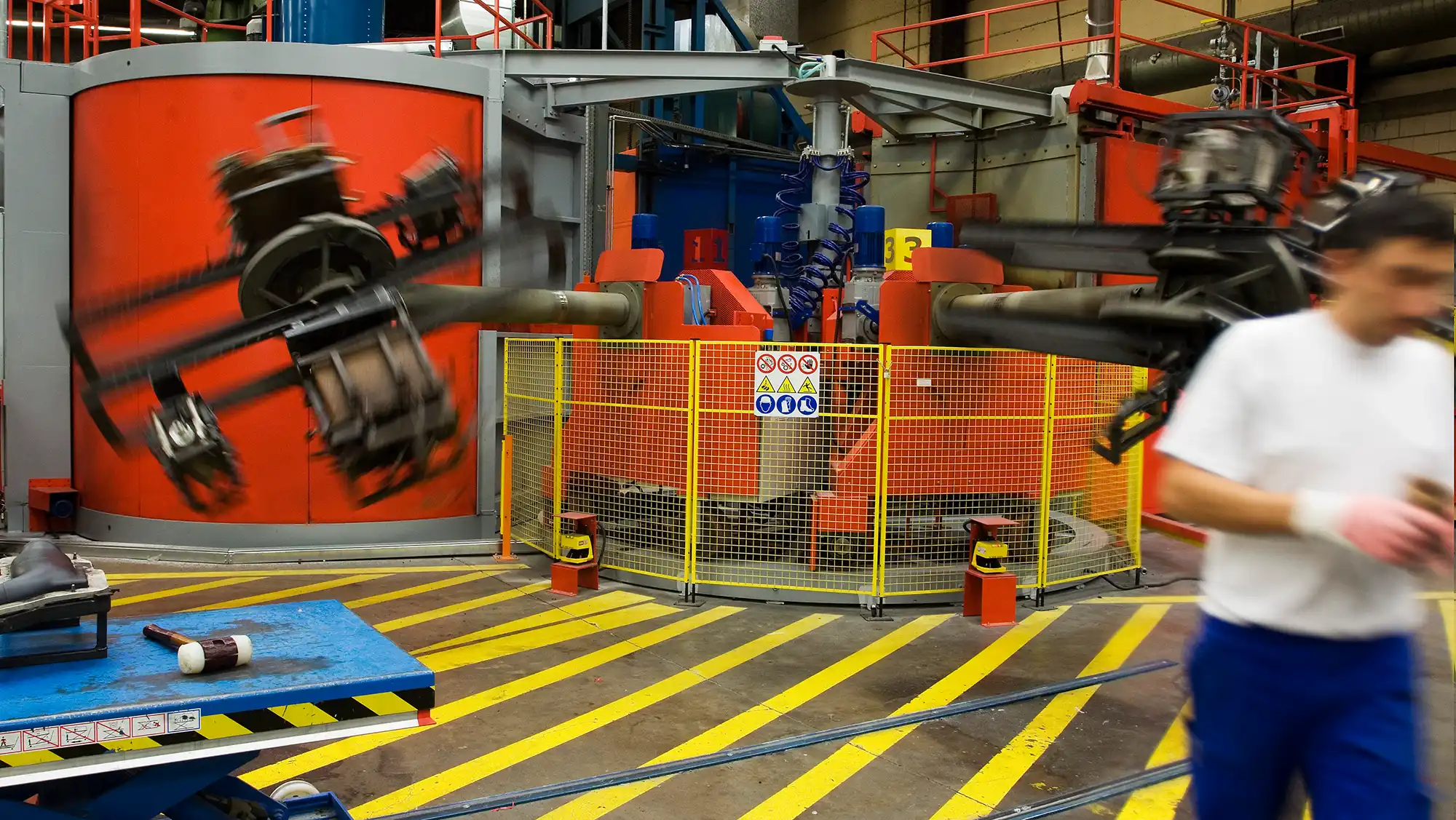
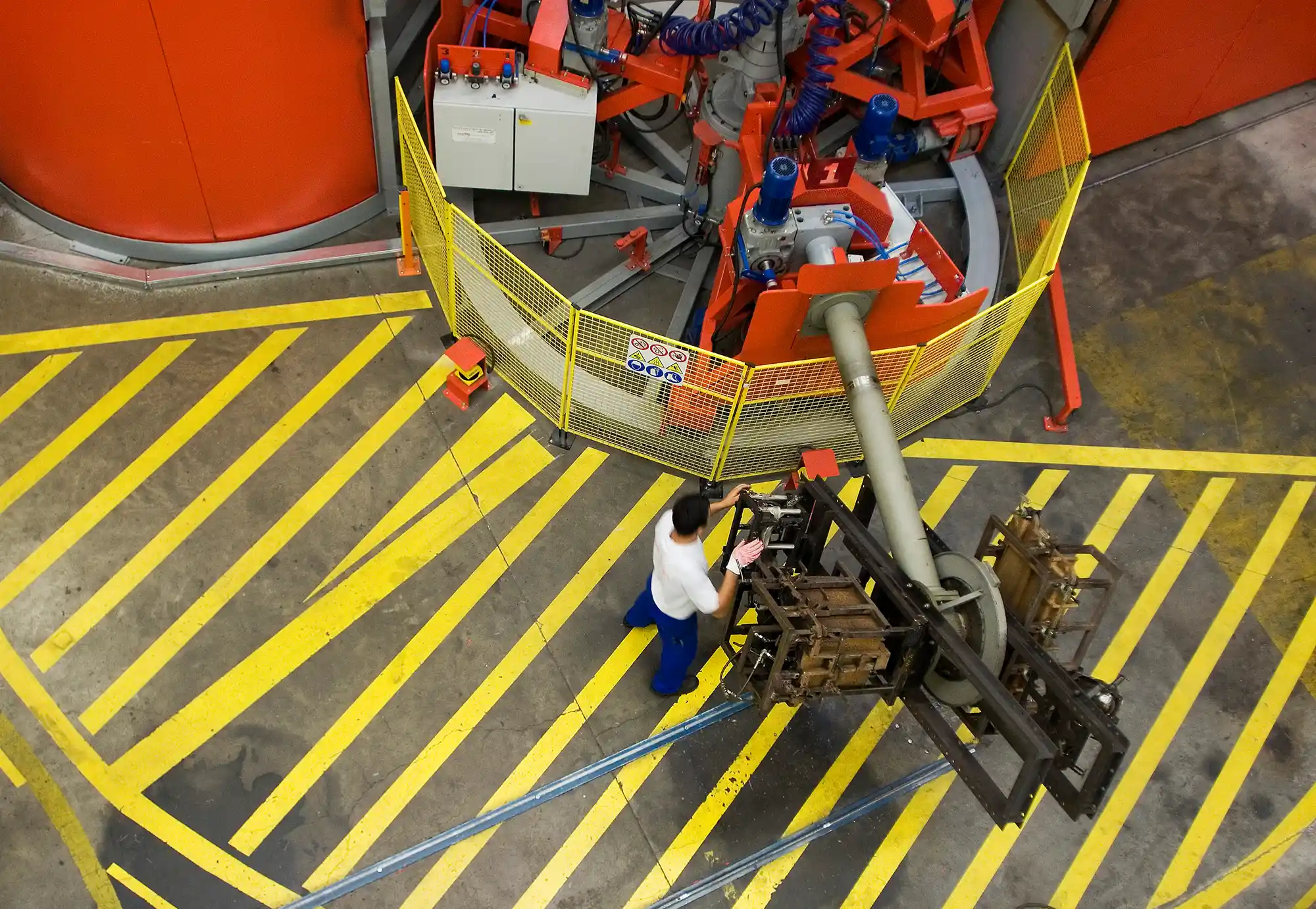
Carousel machines for rotomoulding production
Carousel machines utilize a carousel-like mechanism to rotate multiple moulds at once. Several moulds are mounted on three or four arms that are connected to a central hub, which moves the arms through different stages of the manufacturing process, including: loading, sintering, cooling, and demoulding. As there are three or four arms, each of these stations is used at any time because. Rotomoulding machines type of carousel allow for all arms to be processed simultaneously.
The carousel machines design also enables multiple moulds to be processed on the same arm, making it efficient for high volume production. In addition, the carousel design provides easy access to all sides of the mould during loading and unloading, making it ideal for the production of parts with complex geometries or parts with multiple cavities. The rotation of the arms in two axes allows the plastic to be evenly distributed and moulded into the desired shape. Carousel machines are suitable for the production of both smaller parts and large-size products.
Clamshell, shuttle and rock and roll rotomoulding machines
Clamshell machines have a single chamber that serves as both a forming and cooling station. Loading, cooling and demoulding takes place in front of the furnace. One of the main advantages of clamshell machines is their versatility. They can be used to mould a wide variety of product shapes and sizes, from small parts to large, complex components. In addition, the ability to change moulds quickly makes them flexible and suitable for the production of different product series. Clamshell machines are commonly used in industries where efficient large-scale production is required.
Shuttle machines are usually equipped with two arms that can rotate independently around two axes. These shuttles move the mould into a central heating chamber or oven, which is located in the middle between both shuttles. Parts of the rotomoulding process such as loading, cooling and demoulding of the finished product take place in one place on both sides of the oven. Shuttle machines are ideal for the production of parts with complex shapes, ensuring high precision and repeatability of products.
Rock and roll machines are designed to produce long, slender parts such as slides and canoes. The moulds are placed in a cradle that rotates forwards and backwards at 45 degrees, while rotating 360 degrees inside the cradle. Both sintering and cooling take place in the same area of the machine. With the ability to adjust the angle and speed of the cradle, the rock and roll machines allow the moulding process to be adapted to different product types and production requirements
Linear or vertical rotomoulding machines are a special type of machine that function similarly to rock and roll machines, where the moulds are placed inside a cradle that rotates. This type of machine has multiple cradles, like a shuttle machine. One cradle at the time is inside the oven, while the other cradles can cool down simultaneously, and be unloaded and loaded again.
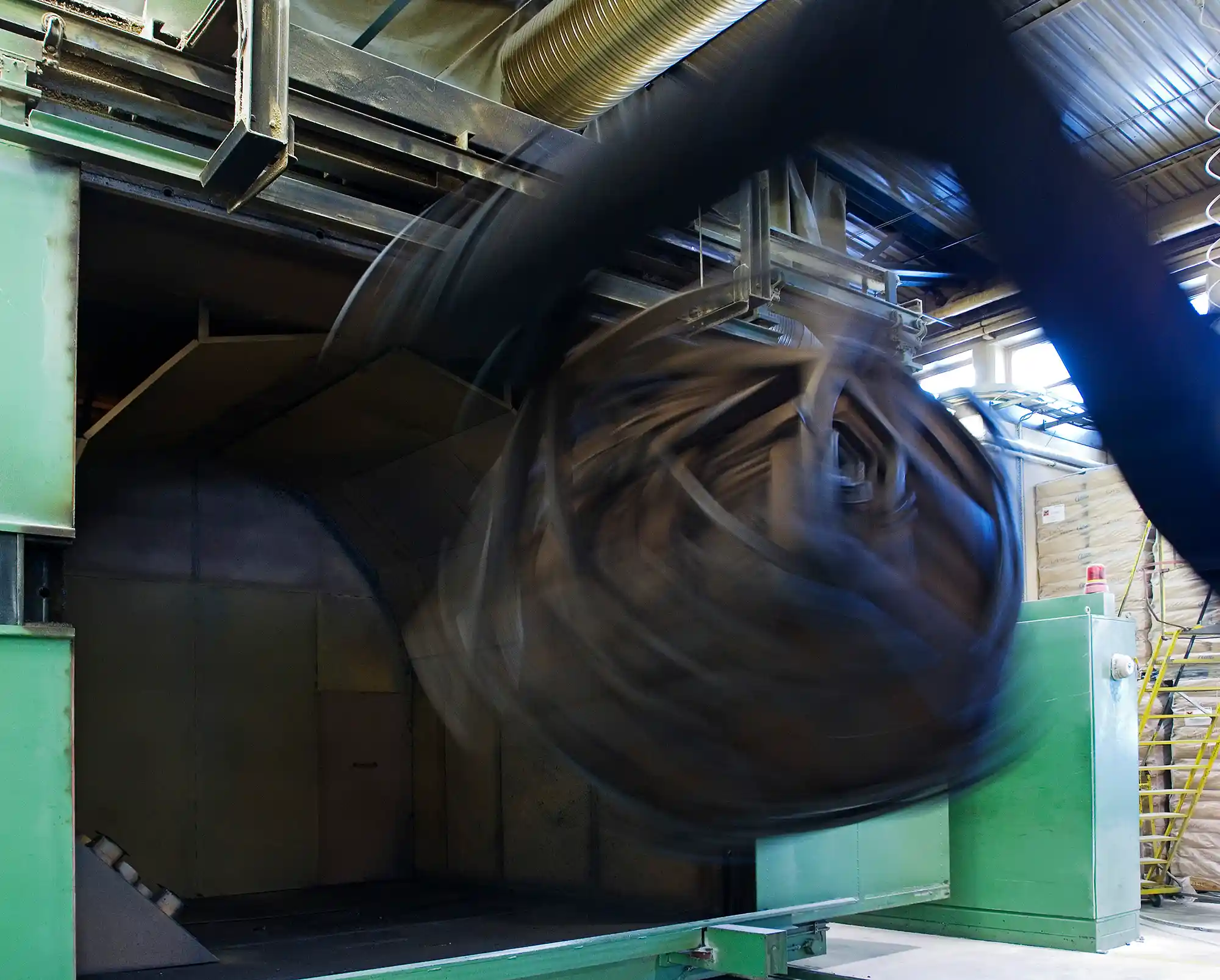
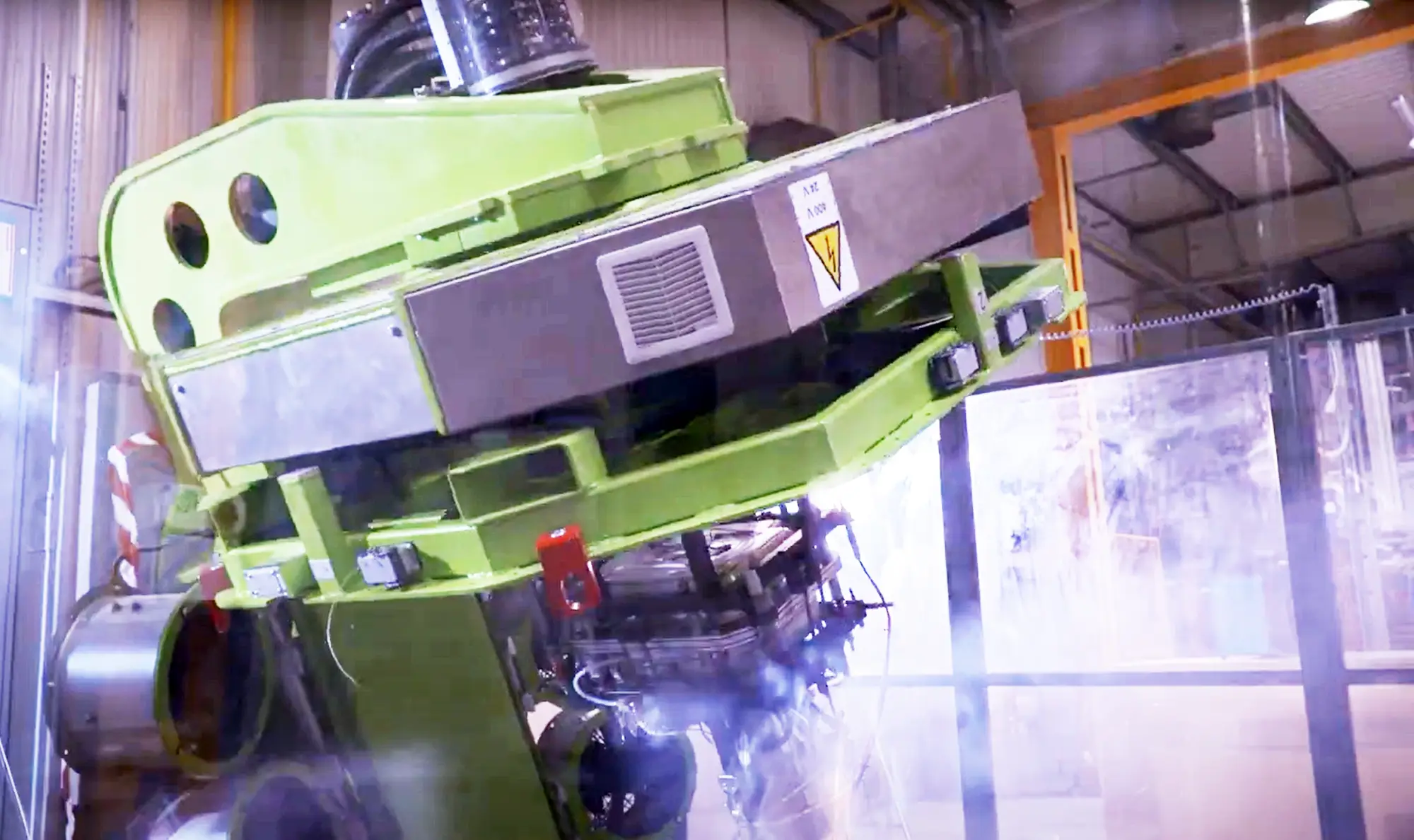
All in one rotomoulding machines
The all in one machines used for plastics production carry out the rotational moulding process in one place. Instead of using a separate oven, the moulds are heated directly by electrical elements built into the mould. This allows the moulds to be properly heated in a very short time. The moulds are then rotated in two directions either on a rotary table or on a robotic arm. The all in one machines do not have a cooling chamber, as the cooling process is carried out by fans directed at the mould. This design allows automation of both part loading and unloading.
Advanced control systems and automation technologies are used in all in one machines to improve the efficiency and precision of the production process. These include computer-controlled material handling and automatic mould filling systems.
Sensors in or on the mould and other monitoring devices in the all-in-one machines provide real-time data to control mould temperature and speed. Machine learning algorithms can then optimise the production process using the information gathered.
The most suitable rotomoulding machines
The variety of designs and functions of each rotomoulding machine allows flexibility and efficient production of a different range of plastic parts. Choosing the right rotational moulding machines is crucial to achieving high quality manufactured parts.
Our many years of experience in rotational moulding technology allows us to understand customers’ unique requirements for customised products, taking into account factors such as part size and shape, material, tolerances and production scales. This enables us to recommend the most appropriate machines to carry out the manufacturing process, ensuring rotomoulded products that meet quality expectations.
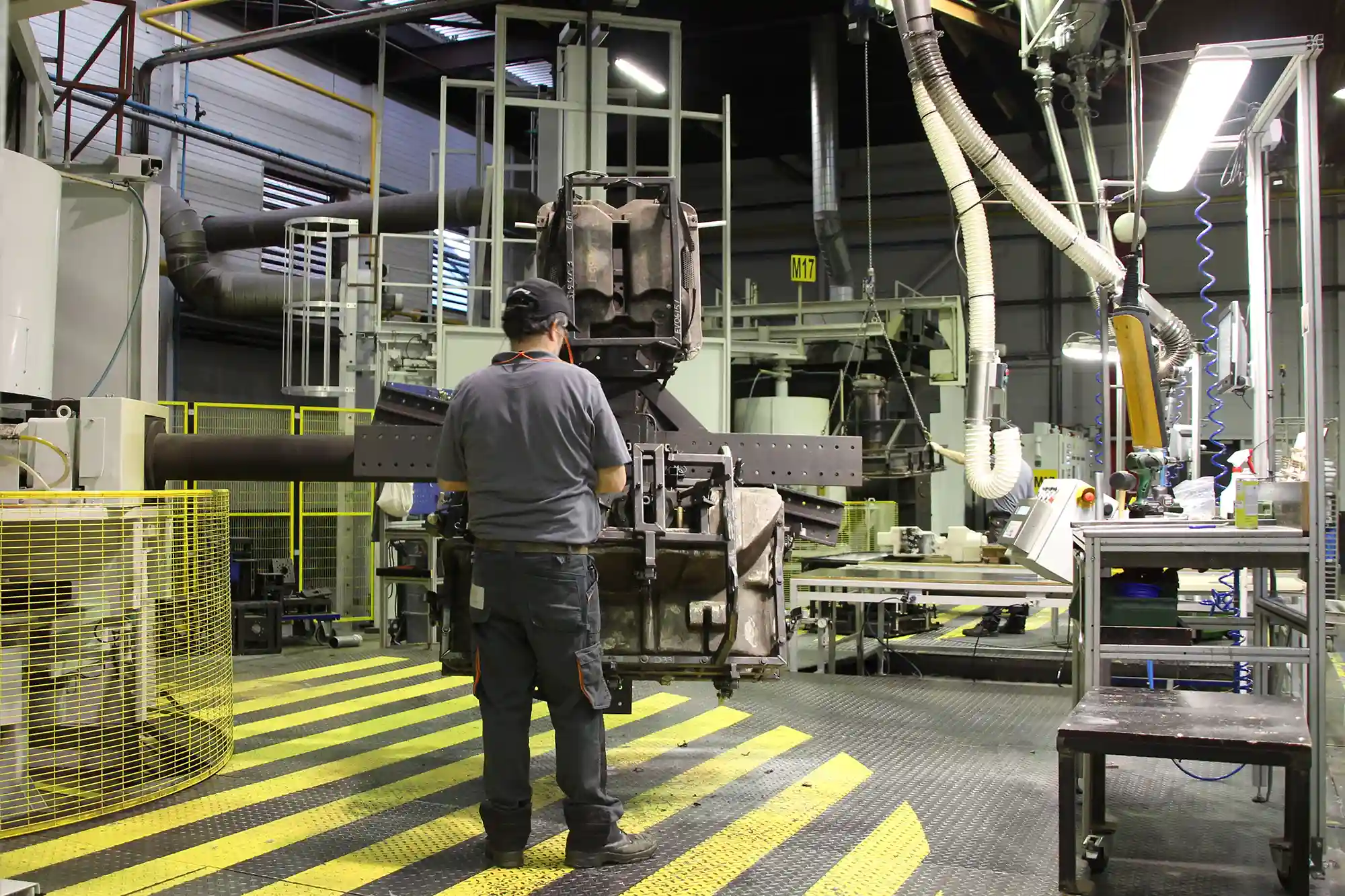

Julia
Sales Manager
"A satisfied customer is the best business strategy of all"
your idea
to life. Start now!


